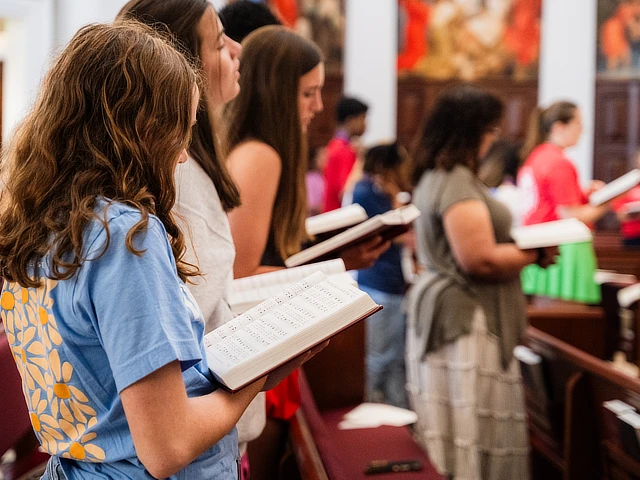
Researchers at Samford University’s Center for Worship and the Arts and Saint Paul University (Ottawa, Ontario) are taking next steps in their binational study of how young people experience and engage with public Christian worship. With the support of a $16,000 grant from Baylor University’s Program for the Future Church (PFFC), their research team is amplifying the voices of teenagers and emerging adults, ensuring that their perspectives shape the future of worship across liturgical contexts.
Listening to Young Worshipers: A Transformative Approach
At a time when church attendance is in decline—especially among younger generations—this project offers a refreshing perspective: rather than lamenting the absence of youth in congregations, the team is focusing on those already participating and learning from their lived experiences. From Roman Catholic to Baptist to charismatic, researchers are exploring the diverse landscape of Christian worship through the eyes of 13-to-29-year-olds.
“We’re not here to speculate about how to ‘fix’ young worshipers. Instead, we want to value their contributions and insights, letting their experiences enrich the conversation on worship in meaningful ways,” said Sarah Kathleen Johnson, assistant professor of Liturgy and Pastoral Theology at Saint Paul University. Johnson is a co-principal investigator on this project, supported by her doctoral students, who are providing vital research assistance.
Bridging Research, Faith and Practice
In a field starved for empirical data, this project stands out. Johnson emphasizes, “We’re not here to simply lament or counter change. We’re here to understand it.” The study is binational, multi-site, ecumenical, and uses a blend of social science and theological research methods.
The initial phase took place in summer 2024 at six university-based summer programs focused on Christian worship Phase two will launch a nationwide survey in 2025—a key step toward capturing the breadth and diversity of young people’s engagement with worship.
Thanks to Baylor’s PFFC grant, the research team will convene an interdisciplinary cohort of scholars and practitioners to analyze and disseminate insights. These experts, drawn from a variety of cultural and liturgical traditions, will collaborate to develop tools that help church leaders inspire full, conscious, and active participation from young people.
A Grant with a Mission: Shaping the Future Church Together
Baylor’s PFFC focuses on four essential pillars: leadership, youth and emerging adults, pedagogy, and lived experience. This project, firmly rooted in the pillar of youth engagement, is closely aligned with the PFFC’s mission to create spaces for listening, learning, and reimagining the church of tomorrow.
“We’re incredibly grateful for this support,” said Emily Andrews, co-principal investigator and executive director of Samford’s Center for Worship and the Arts. “Young people are not merely the future of the church—they are already its heart and soul today. Through this project, we hope to celebrate their role and ensure their voices guide the church forward.”
Building a Vibrant and Inclusive Worship Future
Thanks to the backing of Baylor’s PFFC, the team is poised to contribute to broader conversations about youth, worship, and religious identity. As churches across North America seek to engage younger generations well, this project offers empirical insights and practical solutions rooted in deep listening and collaboration.
Nelson Cowan, co-principal investigator and director of the Center for Worship and the Arts summarily reflects, “Imagine how pastors, leaders, and churches could thrive if they genuinely listened to young people and empowered them to live out the callings God has placed on their lives. This isn’t just research—it’s a roadmap toward renewal.”
